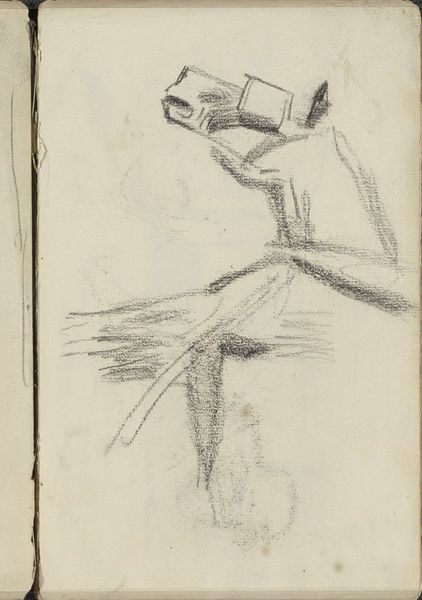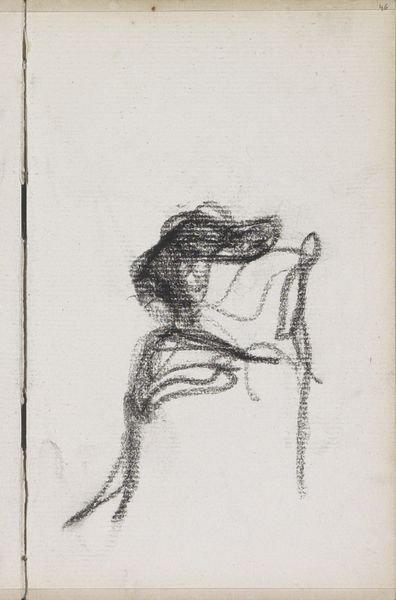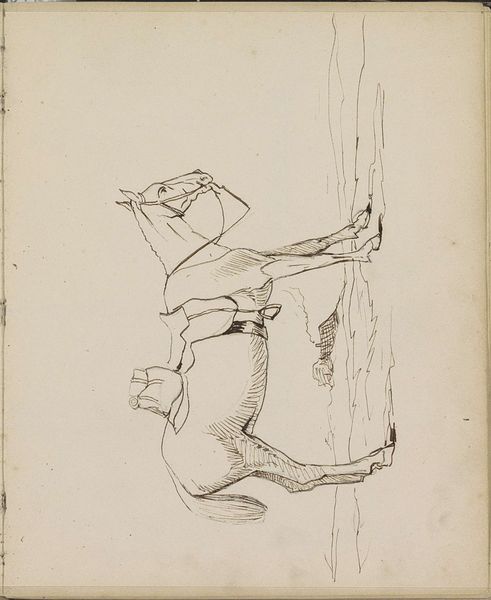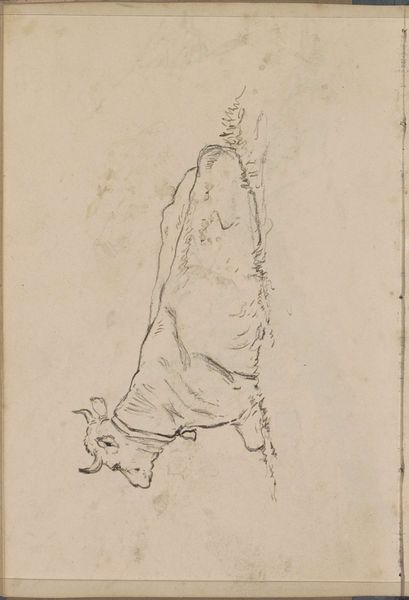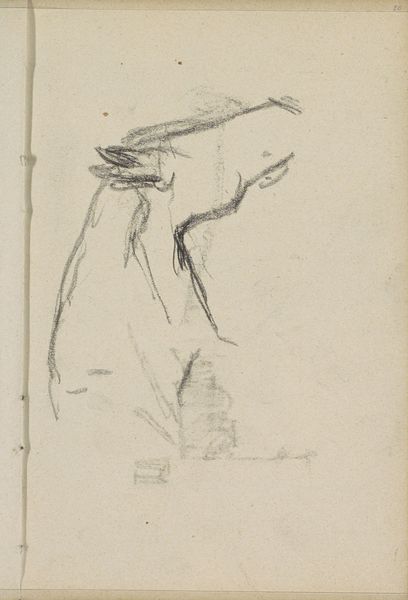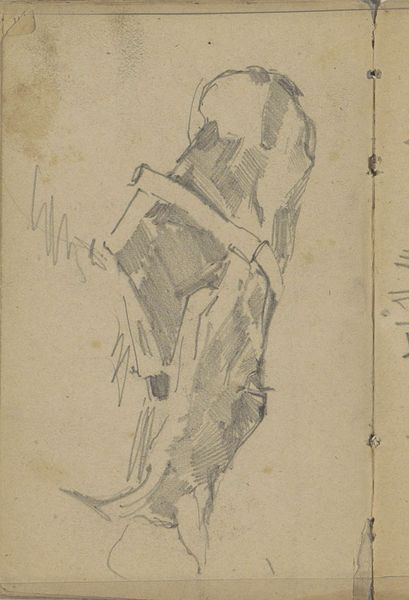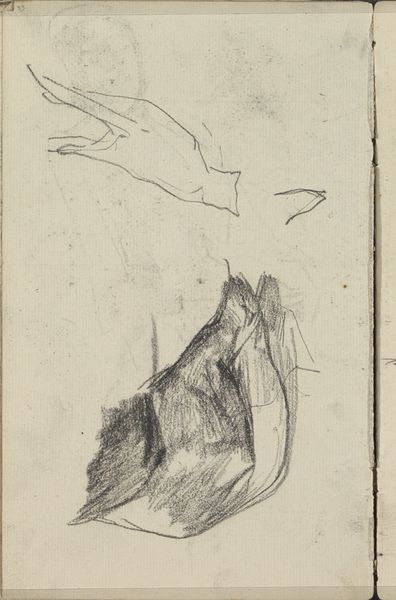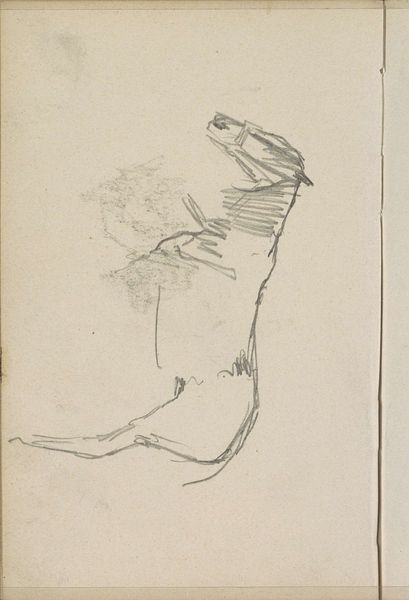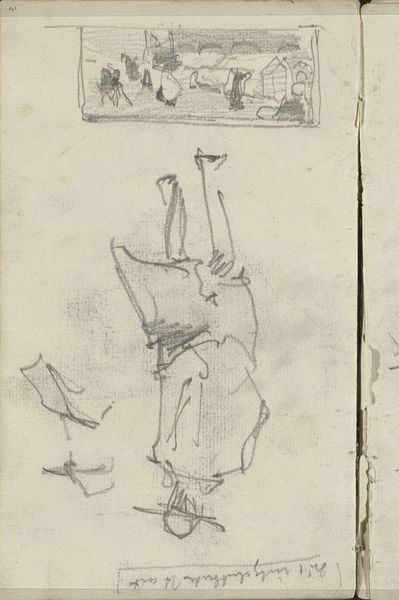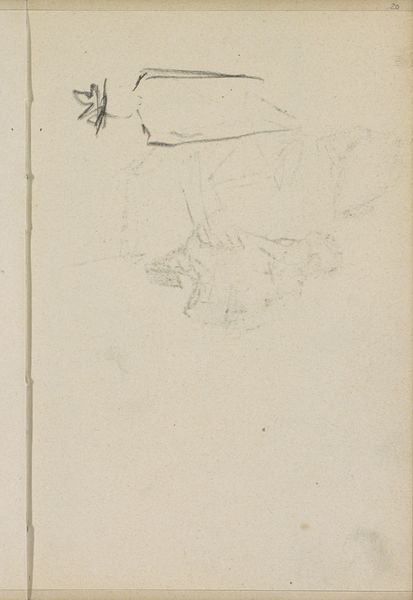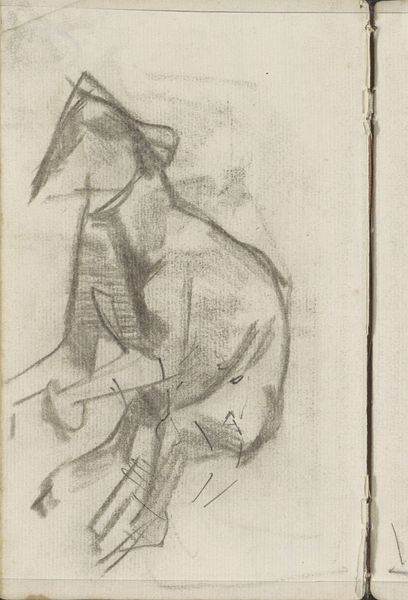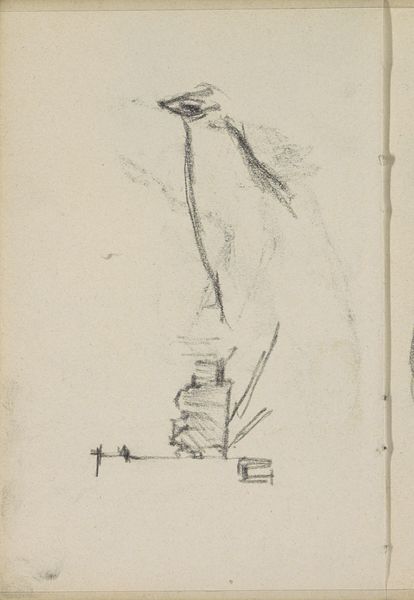
Copyright: Rijks Museum: Open Domain
Curator: Before us hangs “Paard,” or “Horse,” a drawing by George Hendrik Breitner, likely created between 1886 and 1908. It's currently housed at the Rijksmuseum. Editor: My initial impression is one of… vulnerability, maybe? The lines are so sketchy, unfinished. The horse looks almost frail. Curator: Breitner was deeply engaged with depicting the working life of Amsterdam. How do you see that connection to labor reflected in this drawing? It appears to be made from pencil and graphite on toned paper. Editor: Well, you can almost feel the artist’s hand at work. The quick, gestural marks speak to the immediacy of the subject—a horse, probably used for pulling carts or other labor. This wasn’t some pampered show animal. It’s all about function, utility. There's nothing frivolous here. I find the light pencil work creates an impressive dynamic movement, regardless of being an incomplete sketch. Curator: Precisely! And that relates to the broader artistic trends of the time, where there was a shift from romanticized depictions of animals towards a more realistic portrayal of their role in urban and industrial settings. I wonder also about his choice of medium. Pencil and graphite allowed for quick studies, reflecting his interest in capturing fleeting moments. Editor: I see that in the way Breitner uses light and shadow. It's not about perfect representation, but about conveying an impression. The toned paper adds warmth but flattens the depth. Note how the sketchiness suggests motion and the tentative nature of the marks also conveys that sense of urban life as always evolving, always changing. The personal sketchbook format further underlines the rapid, efficient capture of form for later transposition to a more complex medium. Curator: Absolutely. By foregoing the rigidity of more conventional media such as oil paint, Breitner engages the direct link between the tools, process and resulting images, as well as the work these horses were subject to on a daily basis in Amsterdam’s expanding industrial sector. He gives insight into both, by illustrating his connection to capturing fleeting moments from life. Editor: In closing, despite its incomplete nature, "Paard" really strikes a powerful chord. The raw energy of the lines and the vulnerable depiction capture not just the animal, but its place within a specific socio-economic context. Curator: I agree. By embracing the materials and processes inherent in rapid sketching, Breitner invites us to consider the work performed by the draught horse in the economic engine of the industrial revolution. This small sketch expands well beyond merely depicting an animal.
Comments
No comments
Be the first to comment and join the conversation on the ultimate creative platform.
